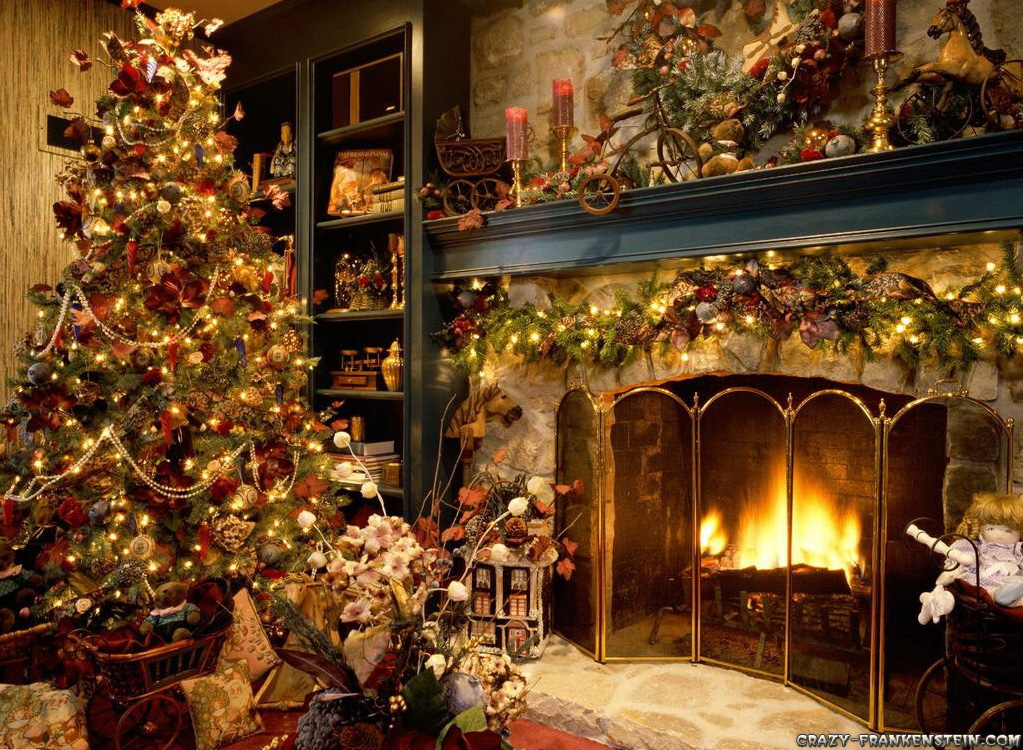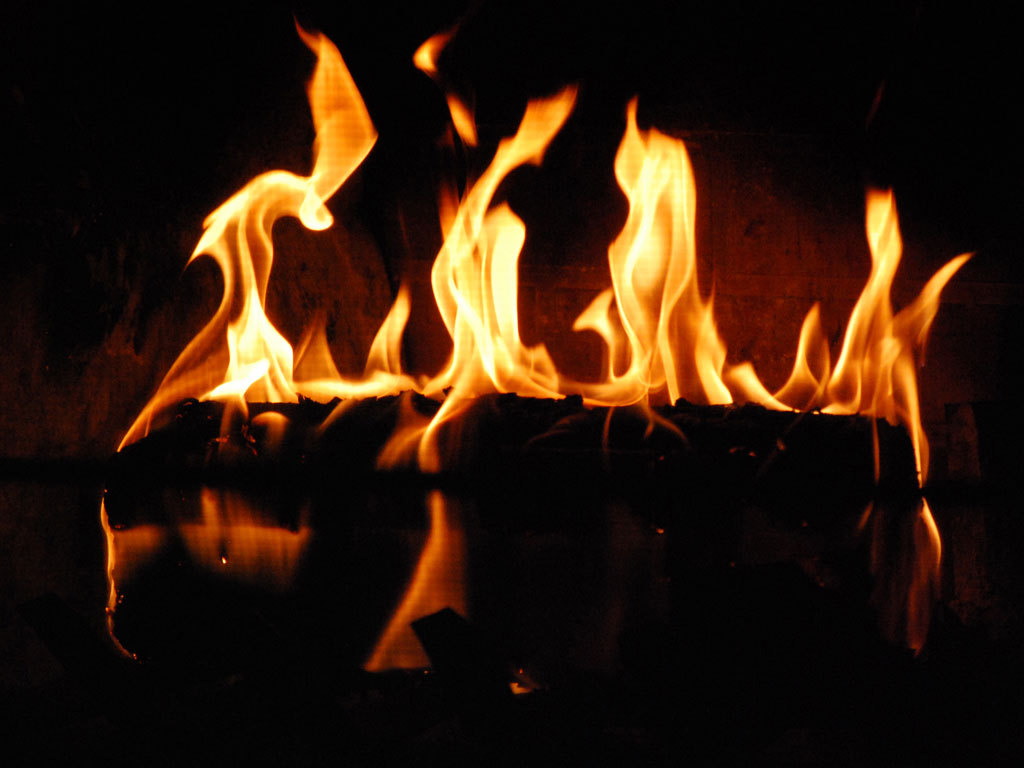But there are other things to be considered, or at least to be aware of, before stocking your fireplace with wood. There are significant differences in emissions between a wood fire, and a fire fueled by another alternative - "firelogs" manufactured by companies like Duraflame and Pine Mountain.

Firelogs came on the scene in the 1960’s when companies were seeking a productive way to dispose of waste sawdust. Manufactured firelogs combine two industrial byproducts, sawdust and petroleum wax, which are mixed and extruded into familiar log like shapes. Manufactured firelogs are generally individually wrapped with paper and require no kindling or starting material.
Firelogs are easy to light and perform much like a candle with the sawdust particles serving as the wick, and the wax as the fuel. The result is a longer, more consistent burn than cord wood that almost fully consumes the firelog, leaving little ash to clean up after the firelog is finished burning. Their ease of use, physical cleanliness, attractive flame, and good quality fire have made their use in fireplaces very popular - creating an annual national demand of approximately 90 million logs.
But firelogs aren't known for the one thing that is often sought after when building a fire - producing heat.
A study in 2006 took a look at several popular firelog brands, and compared their emissions and performance against each other, as well as against a traditional cord wood fire. Some results were as expected, but some were surprising. Not all firelogs are created equal.

The study looked at five popular firelog brands:
Northland, 3 lb. firelog made of wood and wax by Conros Corporation
Pine Mountain Superlog, 6 lb. firelog made of wood fiber and wax by Conros Corporation
Easy Time Firelog, 5 lb. firelog made of wood fiber and wax by Duraflame , Inc.
Xtra Time Firelog, 6 lb. firelog made of wood fiber and wax by Duraflame, Inc.
Java Log, 5 lb. firelog made of coffee grounds and wax by Robustion Technologies Inc.
Logs were evaluated by comparing emission factors, emission rates, fuel characterization, remaining residue, burning duration, and maximum temperature.
Across firelog brands, as well as against results from fires fueled by cord wood, they compared the emissions of:
- Total Particles (PM)
- Respirable Particles (PM2.5)
- Carbon Monoxide (CO)
- Benzene
- Formaldehyde
- 16 individual polycyclic aromatic hydrocarbons (16-PAH)

As is stated in the report findings:
It was very interesting to see the variation in the composition and amount of emissions created from these logs. The Emission Rates indicated that the Duraflame Easy Time and Xtra Time products produced about twice as much carbon monoxide as the Conros Northland and Pine Mountain products. It should be noted that the Conros Northland product was about half the size of the Duraflame Easy Time and Xtra Time products (1.4 kg vs. 2.3 kg), however it produced the same level of CO as the other Conros product, Pine Mountain which was the same size as the Duraflame products.There were also variances measured in terms of heat generated by the individual firelogs:

As noted on the bottom of the chart, the heat content (in BTU/lb) was also measured for each of the firelogs. Although no temperature measurements were made of a comparable core wood fire, an approximate estimation can be made by looking at the energy content of wood used as fuel for a fire.
For example:
The energy content of a cord of white oak is approximately 27,000,000 BTU. (1)
One cord of white oak weighs approximately 3,863 pounds. (1)
Therefore, a corresponding heat content (in BTU/lb) for white oak would be: 6,989.
They key difference between a firelog fire and a wood fire of course, is size. Per manufactures' instructions, only one firelog is to be used at a time. However, when building a wood fire, rarely do you see a single lonely log burning in the fireplace. In fact there are entire webpages and videos devoted to building the perfect wood fire; and not one will advise you to light a single 5-pound log and walk away.
Generally, an average wood fire is going to use 20-25 pounds of wood. With a few calculations, we can see that the total heat content of a 25-pound wood fire is considerably higher than a 5-pound fire log.
Easy Time, 5-pound firelog:
5 pounds x 14,420 Btu/pound = 72,100 Btu
White Oak, 25-pounds of firewood:
25 pounds x 6,989 Btu/pound = 174,725 Btu
So when your goal is a blazing fire to fight off the winter chill, chances are a single firelog may not meet your expectations. However, if your greater concern is reducing emissions - across the board, manufactured firelogs are the way to go.
In our house, we do a little of both. When I want the cheery effect of having the glow from a fire in the fireplace, I throw in a firelog. But my husband is definitely a wood-fire kind of guy (and a legendary wood-splitter too). So when he builds a fire, he BUILDS a fire... and we tend to enjoy those blazing, crackling, wood fires on cold winter nights and on holidays. Tonight for example, I'll probably throw in a fire log as I putter around the kitchen and prep things for Christmas brunch, while my husband is otherwise occupied wrapping last minute presents and putting together the truly monstrous mini-jeep that will be delivered to the boys by Santa tomorrow morning. But tomorrow, after the morning chaos of opening presents has settled... my husband will take the reins and construct a truly huge wood fire for us to enjoy as we play with all of our new toys.
So depending on what you want out of a warm fire in your fireplace, there definitely some benefits to an old-fashioned wood fire, but also many considerations in favor of the manufactured alternative. As with all things, it is just best to have the facts to make an informed decision - no matter which it may be.
Happy Holidays!
To view the entire firelog comparison study, you can check it out at:
http://www.epa.gov/ttn/chief/conference/ei15/poster/li.pdf






Comments